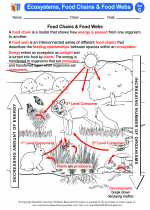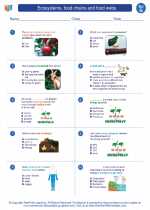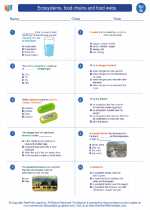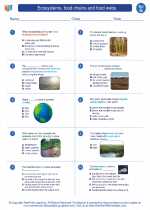Gold
Gold is a chemical element with the symbol Au (from Latin: aurum) and atomic number 79, making it one of the higher atomic number elements that occur naturally. It is a dense, soft, and malleable metal with a bright yellow color and luster that is considered attractive. Gold is a precious metal and has been used for coinage, jewelry, and other arts throughout recorded history.
Physical and Chemical Properties
Gold is a transition metal and is solid at room temperature. It is a good conductor of heat and electricity. Gold is resistant to corrosion and tarnishing, making it extremely durable. It does not react with oxygen or water, which is why it maintains its shine and luster over time.
Occurrences and Extraction
Gold is found in nature in a variety of forms, but it is most commonly found as nuggets or grains in rocks, rivers, and alluvial deposits. It can also be found in combination with other minerals, such as quartz and pyrite. Gold is extracted from these ores through various methods, including cyanidation, smelting, and leaching.
Uses
Gold has a wide range of uses, including:
- Manufacture of jewelry and decorative items
- Electronics, such as connectors and wires
- Medical applications, including dentistry and treatment of certain medical conditions
- Investment and currency (gold bars and coins)
Environmental Impact
Gold mining and extraction can have significant environmental impacts, including habitat destruction, soil and water contamination, and disruption of ecosystems. Efforts are being made to develop more sustainable and environmentally friendly methods of gold extraction and mining.
Study Guide
Here are some key points to remember when studying gold:
- Gold is a chemical element with the symbol Au and atomic number 79.
- It is a dense, soft, and malleable metal with a bright yellow color and luster.
- Gold is resistant to corrosion and does not tarnish.
- It is found in nature as nuggets, grains, or in combination with other minerals.
- Gold is used in jewelry, electronics, medicine, and as an investment.
- Gold extraction and mining can have significant environmental impacts.
◂Science Worksheets and Study Guides Seventh Grade. Ecosystems, food chains and food webs

 Activity Lesson
Activity Lesson
 Worksheet/Answer key
Worksheet/Answer key
 Worksheet/Answer key
Worksheet/Answer key
 Worksheet/Answer key
Worksheet/Answer key
 Vocabulary/Answer key
Vocabulary/Answer key
 Vocabulary/Answer key
Vocabulary/Answer key
 Vocabulary/Answer key
Vocabulary/Answer key
 Vocabulary/Answer key
Vocabulary/Answer key
 Vocabulary/Answer key
Vocabulary/Answer key
